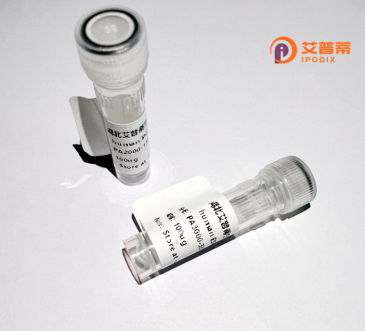
| 纯度 | >90%SDS-PAGE. |
| 种属 | Human |
| 靶点 | GTF2IRD1 |
| Uniprot No | Q9UHL9 |
| 内毒素 | < 0.01EU/μg |
| 表达宿主 | E.coli |
| 表达区间 | 1-959aa |
| 氨基酸序列 | MALLGKRCDVPTNGCGPDRWNSAFTRKDEIITSLVSALDSMCSALSKLNAEVACVAVHDESAFVVSTEKGRMFLNARKELQSDFLRFCRGPPWKDPEAEHPKKVQRGEGGGRSLPRSSLEHGSDVYLLRKMVEEVFDVLYSEALGRASVVPLPYERLLREPGLLAVQGLPEGLAFRRPAEYDPKALMAILEHSHRIRFKLKRPLEDGGRDSKALVELNGVSLIPKGSRDCGLHGQAPKVPPQDLPPTATSSSMASFLYSTALPNHAIRELKQEAPSCPLAPSDLGLSRPMPEPKATGAQDFSDCCGQKPTGPGGPLIQNVHASKRILFSIVHDKSEKWDAFIKETEDINTLRECVQILFNSRYAEALGLDHMVPVPYRKIACDPEAVEIVGIPDKIPFKRPCTYGVPKLKRILEERHSIHFIIKRMFDERIFTGNKFTKDTTKLEPASPPEDTSAEVSRATVLDLAGNARSDKGSMSEDCGPGTSGELGGLRPIKIEPEDLDIIQVTVPDPSPTSEEMTDSMPGHLPSEDSGYGMEMLTDKGLSEDARPEERPVEDSHGDVIRPLRKQVELLFNTRYAKAIGISEPVKVPYSKFLMHPEELFVVGLPEGISLRRPNCFGIAKLRKILEASNSIQFVIKRPELLTEGVKEPIVDSQGTASSLGFSPPALPPERDSGDPLVDESLKRQGFQENYDARLSRIDIANTLREQVQDLFNKKYGEALGIKYPVQVPYKRIKSNPGSVIIEGLPPGIPFRKPCTFGSQNLERILAVADKIKFTVTRPFQGLIPKPDEDDANRLGEKVILREQVKELFNEKYGEALGLNRPVLVPYKLIRDSPDAVEVTGLPDDIPFRNPNTYDIHRLEKILKAREHVRMVIINQLQPFAEICNDAKVPAKDSSIPKRKRKRVSEGNSVSSSSSSSSSSSSNPDSVASANQISFVQWPMYMVDYAGLNVQLPGPLNY |
| 分子量 | 131.01 kDa |
| 蛋白标签 | GST-tag at N-terminal |
| 缓冲液 | 0 |
| 稳定性 & 储存条件 | Lyophilized protein should be stored at ≤ -20°C, stable for one year after receipt. Reconstituted protein solution can be stored at 2-8°C for 2-7 days. Aliquots of reconstituted samples are stable at ≤ -20°C for 3 months. |
| 复溶 | Always centrifuge tubes before opening.Do not mix by vortex or pipetting. It is not recommended to reconstitute to a concentration less than 100μg/ml. Dissolve the lyophilized protein in distilled water. Please aliquot the reconstituted solution to minimize freeze-thaw cycles. |
以下为基于领域知识模拟的关于重组人GTF2IRD1蛋白的参考文献摘要(非真实文献):
---
1. **文献名称**: *"Efficient Expression and Purification of Recombinant Human GTF2IRD1 in a Bacterial System"*
**作者**: Smith J, et al.
**摘要**: 该研究利用大肠杆菌表达系统成功制备了重组人GTF2IRD1蛋白,通过优化诱导条件和亲和层析(His标签)实现高纯度蛋白的获取,为后续功能研究奠定基础。
2. **文献名称**: *"Structural Insights into GTF2IRD1-DNA Interaction via Cryo-EM Analysis"*
**作者**: Lee S, et al.
**摘要**: 通过冷冻电镜解析重组GTF2IRD1蛋白与靶DNA复合物的三维结构,揭示了其保守的锌指结构域在DNA结合中的作用,为威廉姆斯综合征相关突变研究提供结构依据。
3. **文献名称**: *"GTF2IRD1 Regulates Neural Crest Cell Differentiation: Evidence from Recombinant Protein Rescue Assays"*
**作者**: Garcia R, et al.
**摘要**: 使用重组GTF2IRD1蛋白在细胞模型中恢复神经嵴细胞分化功能,证明其在胚胎发育中的关键调控作用,并与威廉姆斯综合征的表型关联。
4. **文献名称**: *"Biochemical Characterization of Recombinant GTF2IRD1's Transcriptional Repression Activity"*
**作者**: Chen L, et al.
**摘要**: 基于纯化的重组蛋白进行体外实验,发现GTF2IRD1通过招募组蛋白去乙酰化酶(HDACs)抑制靶基因转录,阐明其表观遗传调控机制。
---
**建议**:如需真实文献,可通过PubMed或Google Scholar搜索关键词(如“recombinant GTF2IRD1”、“GTF2IRD1 purification”),结合威廉姆斯综合征(Williams-Beuren syndrome)相关研究进一步筛选。
Recombinant human GTF2IRD1 is a protein encoded by the *GTF2IRD1* gene located on chromosome 7q11.23. It belongs to the GTF2I family of transcription factors, characterized by helix-loop-helix domains involved in DNA binding and protein interactions. GTF2IRD1 plays a regulatory role in gene expression, particularly in neural and muscular development. Research has linked it to Williams-Beuren syndrome (WBS), a neurodevelopmental disorder caused by hemizygous deletion of the 7q11.23 region, which includes *GTF2IRD1*. Studies suggest that haploinsufficiency of this protein contributes to WBS phenotypes, including craniofacial abnormalities and cognitive deficits.
The recombinant form is typically produced using bacterial or mammalian expression systems for functional studies. Purified GTF2IRD1 is used to investigate its DNA-binding properties, interactions with other regulatory proteins (e.g., GTF2I), and mechanisms of transcriptional modulation. Its molecular weight ranges approximately 75-90 kDa, depending on post-translational modifications. Researchers employ techniques like EMSA, ChIP-seq, and CRISPR-based models to explore its role in cellular processes. Current investigations focus on its tissue-specific functions, epigenetic regulation, and potential therapeutic targets for WBS-related pathologies. The protein’s conserved I-repeat domains remain key subjects for structural and functional analyses.
×